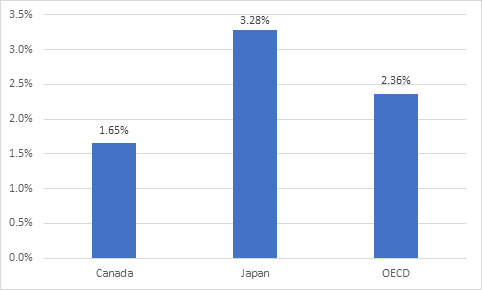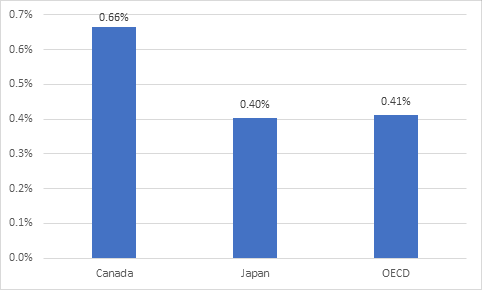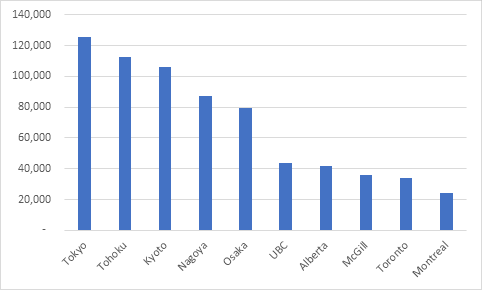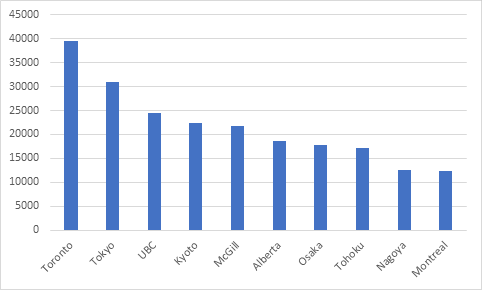We all know that Japan is a technological leader, right? An “innovation nation”? And we all know innovation comes from universities, right? So Japanese universities must be kind of god-like in their innovation abilities, right? Right?
Well, no, not exactly. Or not the way Canadian universities think about the term, anyway. And understanding why this is the case is a helpful way to think about the poverty of Canada’s own innovation thinking.
So, let’s start by looking at Gross Expenditures on Research and Development as a percentage of GDP (figure 1, below). No surprises here: Canada underperforms the OECD average, and is drastically behind Japan, which spends a little more than twice what Canada does on R & D, adjusted for the size of the economy.
Figure 1: General Expenditure on Research and Development as a Percentage of GDP, 2015
But now let’s look at Research and Development activities performed at institutes of higher education, as a percentage of GDP. Here we see a very different picture, with Canada way out in front of both Japan and the OECD.
Figure 2: Expenditure on Research and Development Performed at HEIs, as a Percentage of GDP, 2015
There is a lesson here, which of course the university lobbyists never want to tell you: innovative countries aren’t necessarily the ones who spend a lot of money on university science. Innovation is nearly always a private sector phenomenon.
So, on the whole, Japanese universities are less research-focussed than Canadian ones. But maybe that shouldn’t be a surprise: remember, the vast majority of universities in Japan are private and with only a couple of notable exceptions, these institutions aren’t conducting much research. So, although Japan spends less on research, proportionately, than Canada does, it is highly concentrated in just a few universities – specifically, the old Imperial universities. Take a look, for instance, at the expenditures per student at the top five Japanese universities vs. the top five Canadian ones.
Figure 3: Expenditures per Student at Top Japanese and Canadian Universities, 2015-16, in USD
Now, this isn’t a wholly fair comparison because as near as I can tell Japanese universities include a greater chunk of their hospital expenditures in their institutional reporting than do Canadian ones, but you get the picture here: Japanese universities have financial and research profiles, which more closely resemble big American state universities like Michigan or Washington, than they do Canadian ones. But despite this big financial advantage, there is not a corresponding difference in scientific research output, at least as measured by publications.
Figure 4: Publications in Clarivate-Indexed Journals, 2012-2015
This raises the question: what the heck is happening to all that money? The answer is that Japanese universities spend a lot of their time on much more applied types of research than Canadian ones. For instance, those top five Japanese universities all appear in the top 30 world universities in terms of patent applications (none of the Canadian ones do).
And that kind of gets to the heart of the differences in innovation. In Canada, innovation is conceived as being mostly about “discovery” and “new products”. In Japan, innovation is mostly about process and incremental improvements. That means they have far less need of universities to do fundamental research (which is not to say they don’t do quite a bit of it or that they don’t do it well), and as a result i) most of their R & D spending happens outside universities and ii) such R & D spending as does happen in universities has a more applied bent.
That’s something to ponder next time anyone tells you Canada’s innovation future necessarily depends on more research dollars in higher education. Other countries manage fine without; and while we can’t necessarily follow their path in the short term, it’s worth thinking about how they manage so well with so little to think more clearly about our own choices – and our own performance.





 Tweet this post
Tweet this post
